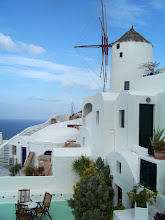
The earliest ensemble film I’ve seen is Spike Lee’s Do the Right Thing (1989). It pictures the daily life and racial conflicts within a black neighborhood in Brooklyn on a sizzling summer day. The switch between different characters feels so natural, as if we are walking down the street encountering the real life of the neighborhood. It’s very funny, satirical, at the same time realistic. The famous “fuck all” rant in his later film 25th Hour is actually a condensed version of the themes in Do the Right Thing.

Two years later, Richard Linklater made Slacker. I don’t much he was influenced by Lee, but Slacker appears to be an extreme case of ensemble film: we follow one group of people down the street, then another group pass by and we start following them instead. Thus the whole film flows between all the different characters who don’t know each other but only pass by each other by pure chance. The common thing among these people is that they are all slackers on the street.

Robert Altman’s The Player came out one year after. The opening sequence uses the same continuous flow as seen in Slacker. Then Altman made his exemplar ensemble film Short Cuts which palpably presents the everyday lives of typical families in LA. This film probably influenced many famous ensemble films later, such as Magnolia (1999), Crash (2004) and Babel (2006).










